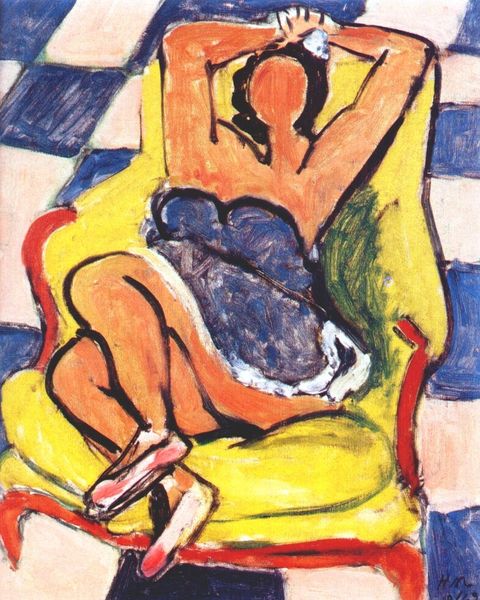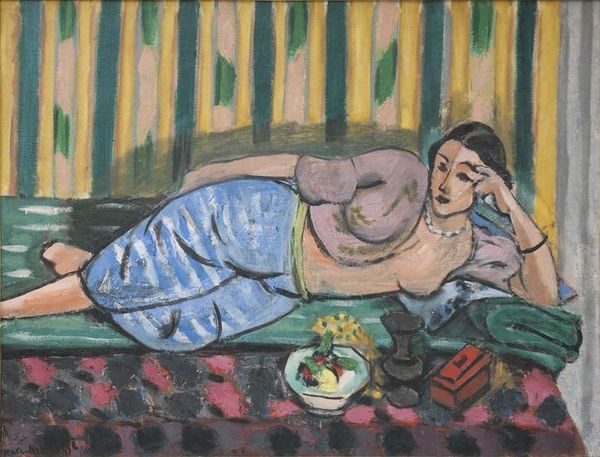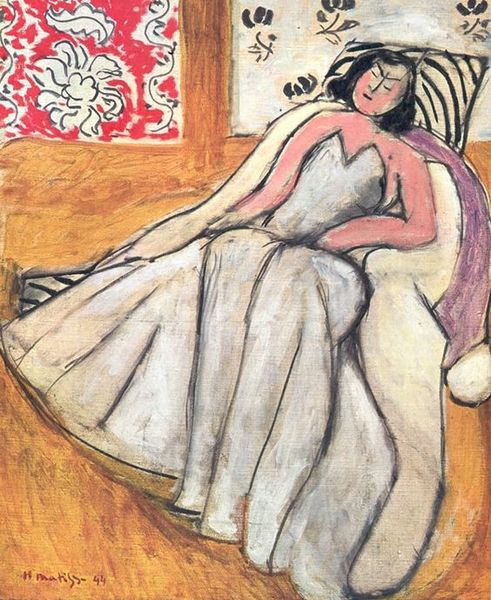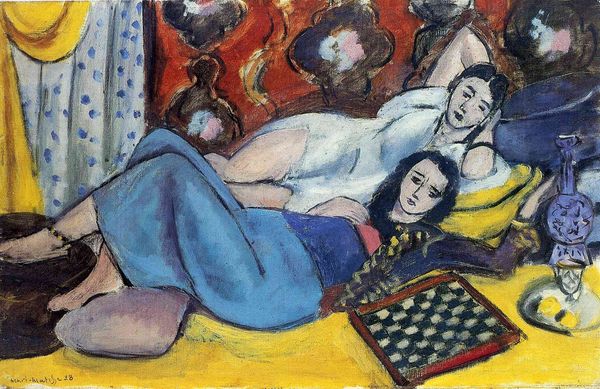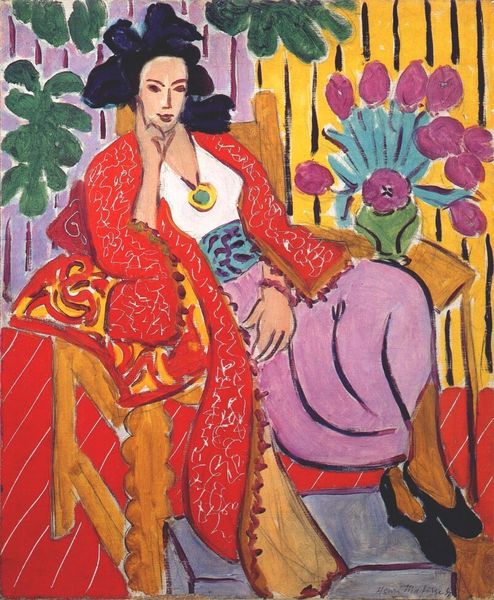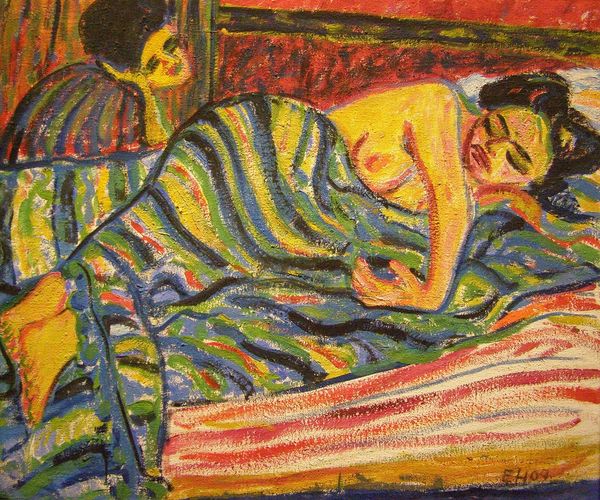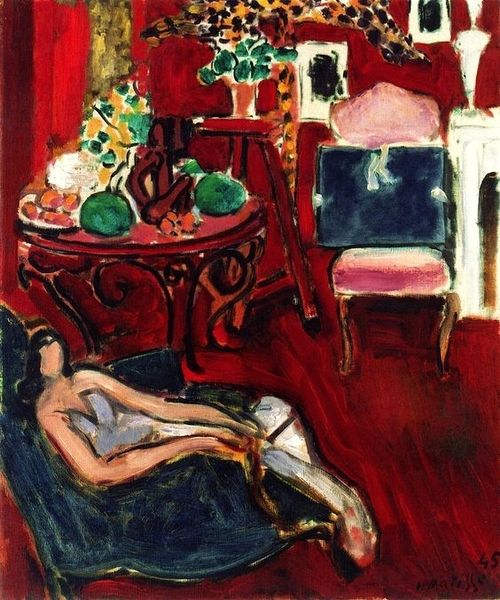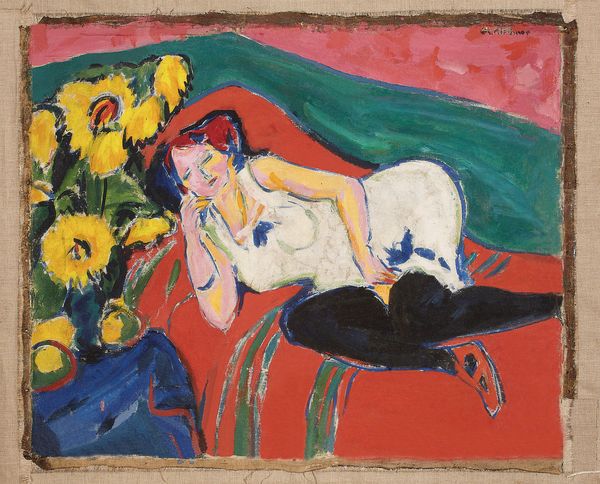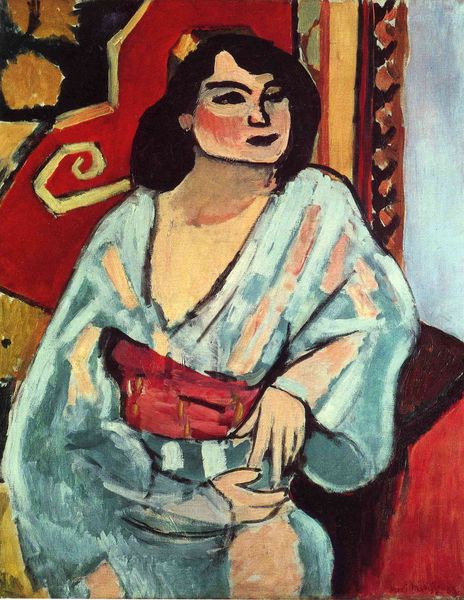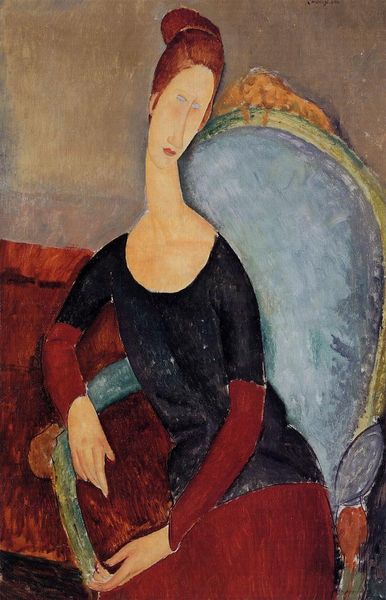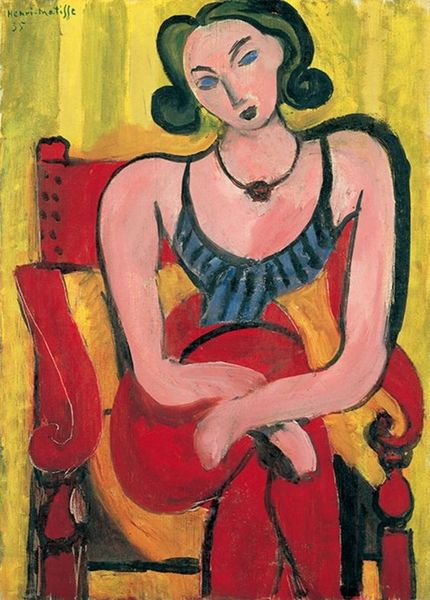
Copyright: Henri Matisse,Fair Use
Curator: Upon viewing, I immediately sense a languid stillness; it's quite enveloping. Editor: Indeed. We’re looking at Matisse's "Odalisque" from 1926, rendered in oil paint with that characteristically vibrant Fauvist style. He had a well-documented fascination with representing the reclining female form. Curator: The title suggests an engagement with Orientalism, yet there’s something quite intimate, almost domestic, about this scene. It deviates from the exotic stereotypes usually associated with the "odalisque." It's far from voyeuristic, isn’t it? The woman isn't flaunting; she’s simply reclining. Editor: Exactly. Matisse was very deliberate about stripping away conventional expectations. While influenced by the visual vocabulary of North Africa, he reimagined these themes through a modernist lens. Think about the boldly patterned fabrics—they flatten the perspective and dissolve the distinction between figure and background. What symbols or historical traces resonate most for you in this artwork? Curator: I find the decorative motifs endlessly fascinating. The clashing wallpapers behind the reclining woman feel almost like competing narratives, historical fragments pieced together to create a new, visual story. Her serene expression, though, grounds the chaotic energy around her. It suggests a kind of self-possessed contentment. Editor: That tension between interiority and spectacle, between the individual and her environment, is something Matisse explored throughout his career. This "Odalisque" serves as a bridge between historical representation and modern aesthetics, which had clear impact on the cultural interpretation of female figures. Curator: I agree. It’s as though he uses historical symbols, in particular this archetype, to say something timeless about beauty, repose, and the inner life. Editor: The "Odalisque" becomes a vessel to interrogate how we see and have seen women across centuries, yes. A powerful reminder that even in seemingly straightforward portraits, the history and politics of imagery always play a vital role. Curator: It provides food for thought—visual culture and how we navigate its historical undertones... always fascinating. Editor: Indeed. Thank you for adding that dimension; an artist looking into cultural reflections, isn’t it?
Comments
No comments
Be the first to comment and join the conversation on the ultimate creative platform.
